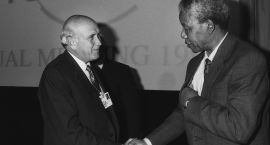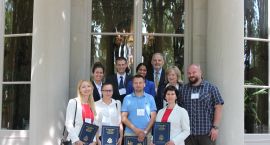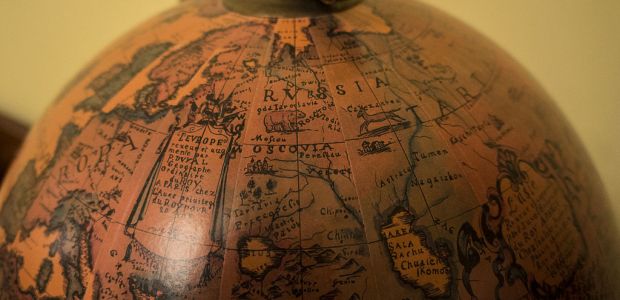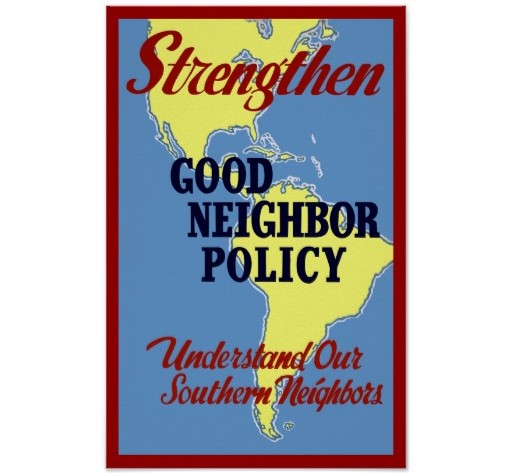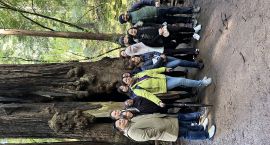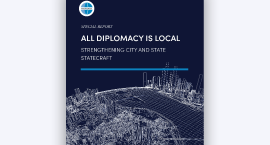The international exchange of culture has existed since the dawn of time. However, most of the events that created international exchanges, as we know them now, happened in the 20th century.
With the International Visitor Leadership Program (IVLP) approaching its 75th year, this article highlights a few of the events in history that pre-date, and played a part in, the creation of this important cultural exchange program.
1) Talk of cultural exchanges goes back to FDR
WPA poster “Strengthen Good Neighbor Policy – Understand Our Southern Neighbors.
The narrative of promoting cultural exchanges can be traced to President Franklin D. Roosevelt’s Good Neighbor Policy initiated in 1933, which moved away from U.S. interventionism in Latin America. During a time when fascist ideology was on the rise in Europe, Roosevelt, through this policy, reinforced the idea that the United States would be a “good neighbor” and engage in reciprocal exchanges with Latin American countries.
2) FDR emphasized a “wider distribution of culture” in 1936
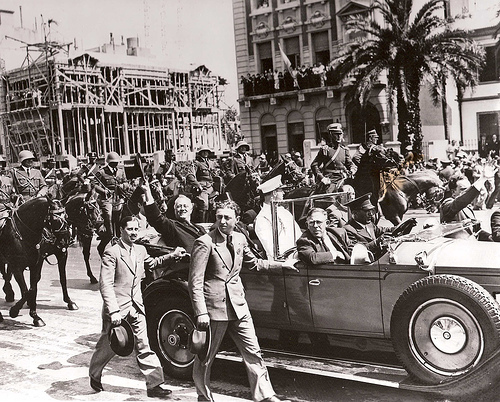
President Franklin D. Roosevelt in Buenos Aires, 1936.
President Franklin D. Roosevelt’s concern over the rise of fascism in Europe prompted him in early 1936 to suggest a meeting of the American republics to discuss the maintenance of peace in the Western Hemisphere. This meeting was the Inter-American Conference for the Maintenance of Peace, which met in Buenos Aires in December 1936.
At the conference, Roosevelt gave a speech that emphasized unity and cultural exchange among the Western Hemisphere nations or “New World,” as a means to counter the growing fascist movement in Europe, referred to here as the “Old World.” Roosevelt stated:
“Can we, the Republics of the New World, help the Old World to avert the catastrophe which impends? Yes; I am confident that we can…We are here assembled to show [the Western Hemisphere’s] unity to the world (…) and defend the democratic form of constitutional representative government. That through such government we can more greatly provide a wider distribution of culture, of education, of thought, and of free expression.”
3) Latin American journalists were the first international visitors

International visitors at Meridian House in 1964, twenty four years after the first group.
In December 1940 and January 1941–just a few years after the Inter-American Conference—the very first group of emerging leaders, in this case journalists from Latin America, were invited by the U.S. government to participate in a professional and cultural exchange program in the United States. They participated in what today is known as the International Visitor Leadership Program (IVLP).
4) ECA used to be DCR (Division of Cultural Relations)
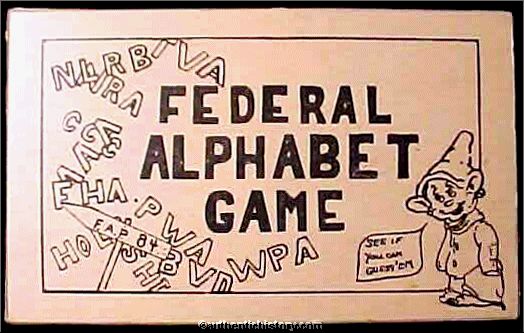
Board game poking fun at FDR’s “alphabet agencies.”
At its inception, the IVLP was managed by the State Department’s Division of Cultural Relations (DCR), which was first established in 1938. After several name changes, in 1960 DCR became what is today known as the Bureau of Educational and Cultural Affairs (ECA), under which programs such as the IVLP are administered.
5) FDR’s advisor wanted exchanges to be an “interchange of ideas”
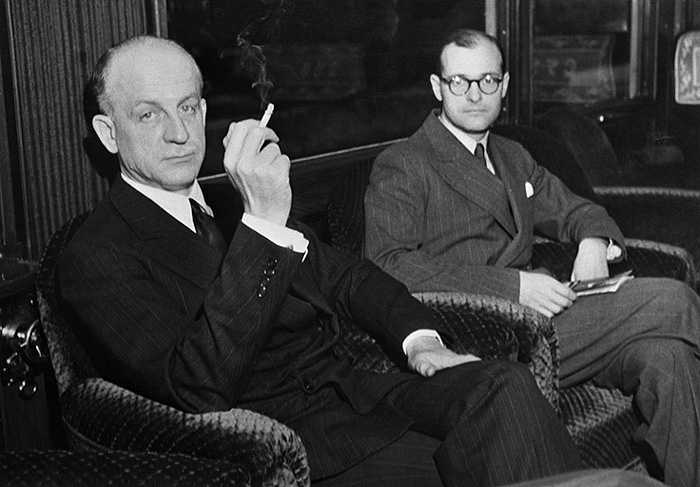
Sumner Welles with George F. Kennan, the future author of the doctrine of containment, during Welles’s mission to Europe, 1940.
In response to discussions taking place within the State Department over directions to take post-War cultural relations programs, Sumner Welles, a diplomat and foreign policy advisor to Franklin D. Roosevelt, posed the following question while serving as Under Secretary of State:
“Should a true cultural relations program be used to implement the foreign policy of any one country; or should it provide a vehicle for the interchange of ideas and the deepening of understanding in order to aid people in the determination of their destiny?”
This quote by Sumner Welles illustrates post-World War II thinking within the State Department, and how DCR was to serve as a facilitator of cultural exchanges, not a manager of them. Then and now, opportunities for mutual benefit and shared learning are provided to emerging leaders from the U.S. and around the world—opportunities that are free of coercion and propaganda. If a best practice observed in the United States is adopted in another country as a result of the exchange, then this was done voluntarily by the exchange participant, and in the best interest of that specific country. This forms the basis of the IVLP today.
6) Truman said cultural exchanges were vital to national security
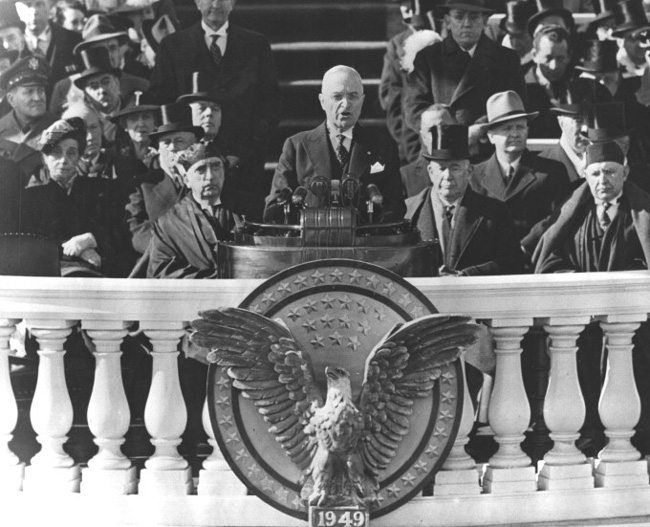
Inaugural speech of President Truman. Second inauguration of Harry S Truman, 1949.
On July 13, 1950 President Harry S Truman wrote an official letter to the Speaker of the House outlining the importance of the United States’ and other “free nations’” participation in a “campaign of truth” to combat communism:
“The free nations of the world have a great advantage in that truth is on their side. Communist leaders have repeatedly demonstrated that they fear the truth more than any weapon at our command. We must now throw additional resources into a campaign of truth which will match in vigor and determination the measures we have adopted in meeting postwar economic and military problems.”
The President regarded “such an expanded campaign of truth as vital to [the United States’] national security,” and he elaborated further “that the country’s information and educational exchange efforts” should be “concentrated on the most critical areas in the world today.”
7) However, Truman was called out for underfunding exchanges

The battle for congressional funding has a long history.
In 1950, the United States Advisory Commission on Information (today known as the U.S. Advisory Commission on Public Diplomacy) called out the president for spending too little on information and education. The government was spending $15 billion on defense, but only $30 million on programs “designed to make the rest of the world understand our purposes.” The letter further stated:
“You have been aware of the necessity for a much more vigorous ‘campaign of truth,’ as you demonstrated in your speech to the American Society of Newspaper Editors. In that speech, you said, among other things, ‘We know how false these Communist promises are.’ But it is not enough for us to know this. Unless we get the real story across to people in other countries, we will lose the battle for men’s minds by default.”
As a result, on September 27, 1950, the President approved a bill making supplemental appropriations for international information and educational activities.
These examples illustrate some of the world events, leadership, and rhetoric that helped sow the seeds of what we know today as the International Visitor Leadership Program (IVLP). In cooperation with the State Department, Meridian sees almost 1,600 emerging leaders from around the world walk through its doors every year, whose presence helps promote greater mutual understanding, trust, and unity with the Americans they meet.










